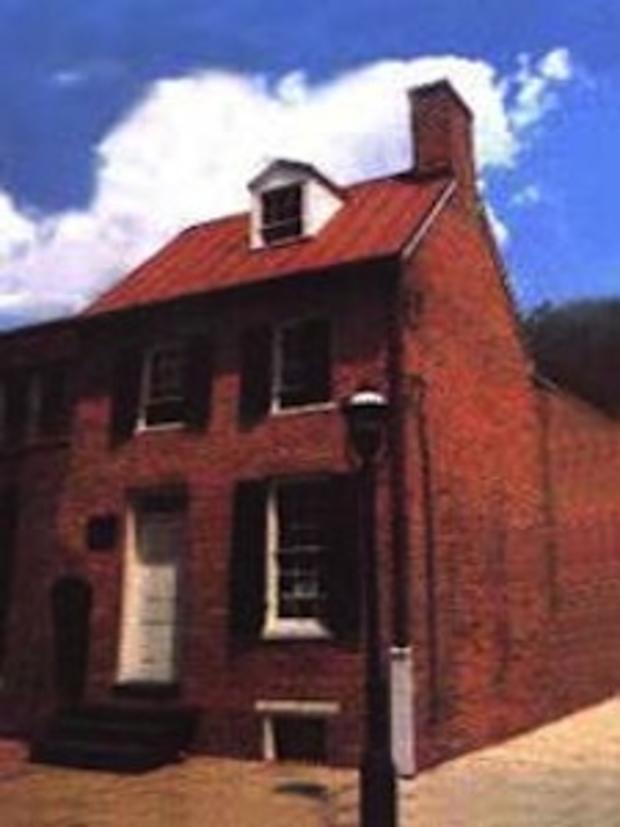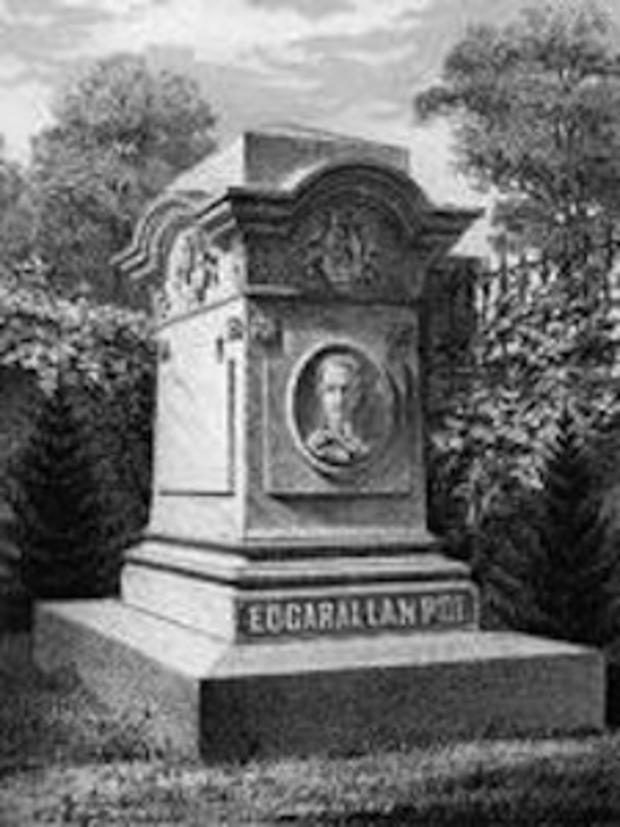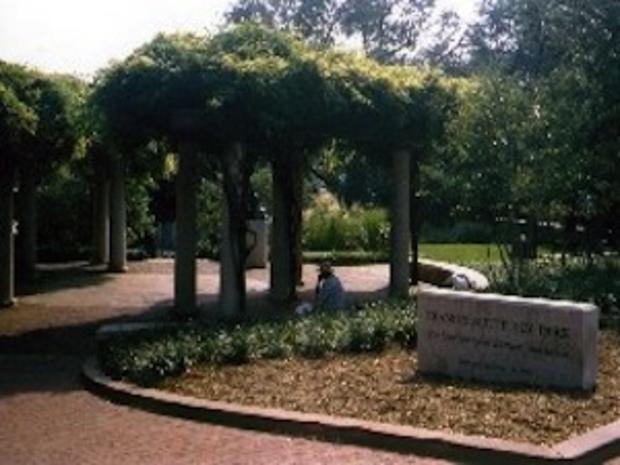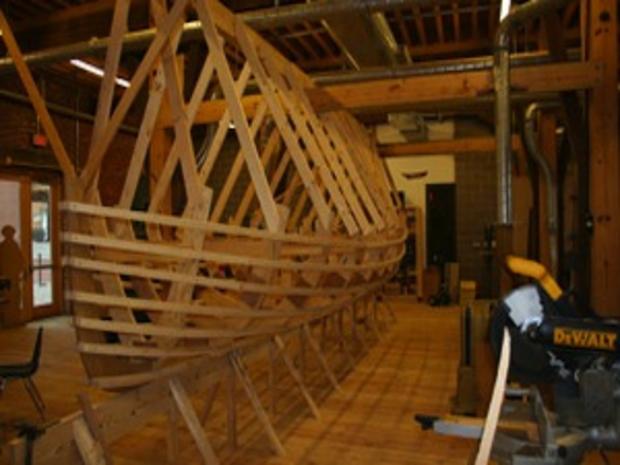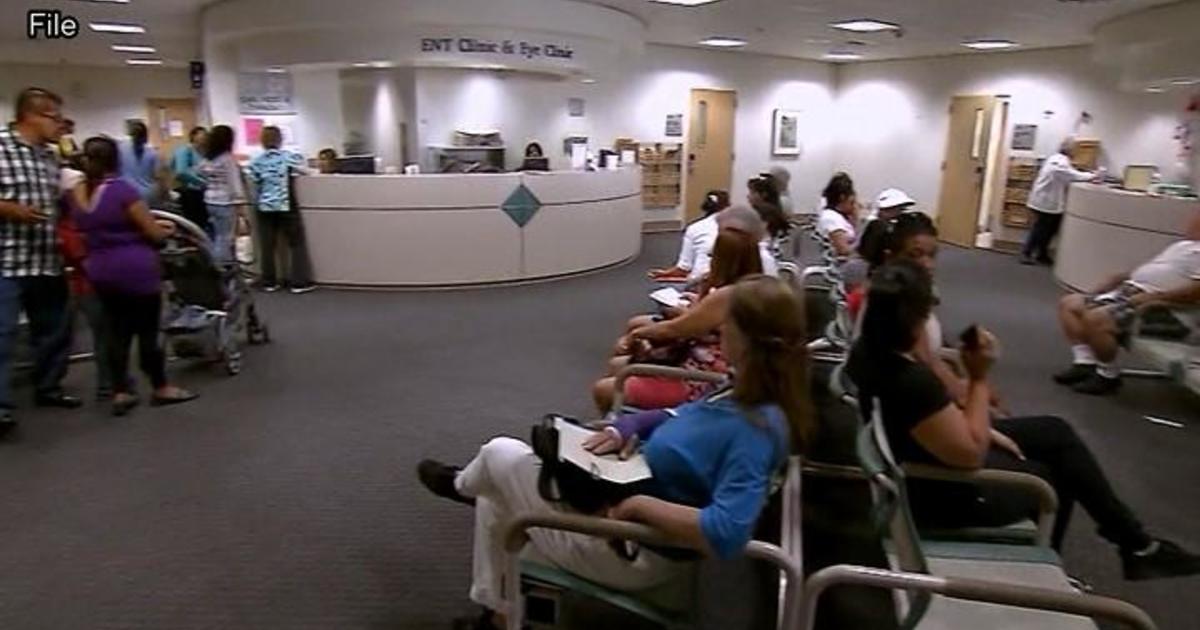Best Places To Learn About The People Who Built Baltimore
Edgar Allan Poe
House and Museum
203 N Amity St
Baltimore, Md. 21223
(410) 396-7932
eapoe.org
To walk through the home where America's greatest Gothic writer lived and to look over his family's possessions pulls you back in history to gain an appreciation for his brief time in Baltimore. Edgar Allan Poe lived in this house from 1833 to 1835, along with his widowed aunt Maria Poe Clemm, his future bride Virginia Eliza and other family members. During this time, Poe wrote numerous poems and short stories and won a $50 prize from a Baltimore newspaper for "MS. Found in a Bottle."
Westminster Hall
Gravesite and Memorial
Corner of N Greene St and W Fayette St
Baltimore, Md. 21201
(410) 706-2072
eapoe.org
Poe was ultimately relocated after his death to rest in peace beside his aunt Maria and beloved wife, Virginia, who died of consumption two years before Poe in spite of her young age. The large, marble monument atop his grave attracts visitors near and far. Beginning around 1949, a mysterious stranger known as the "Poe Toaster" visited the cemetery undetected, leaving a bottle of cognac and three roses on the grave every year on Jan. 19, Poe's birthday. After three consecutive years where the Toaster left no evidence of a visit, Jeff Jerome, the curator of the Baltimore Poe House and Museum, declared the tradition to be over. However, Poe enthusiasts hope to take up the mantle to continue the practice.
Francis Scott Key
2400 E Fort Ave
Baltimore, Md. 21230
(410) 962-4290
nps.gov/fomc
The man who wrote our National Anthem was a Marylander through and through, as he was born in Frederick County and died in Baltimore. In the War of 1812, Francis Scott Key was held prisoner by the British during the Battle of Baltimore on Sept. 13 and 14, 1814. Key had been overlooking the suspenseful attack on Fort McHenry from a nearby British ship with an ever-watchful eye to see which flag would adorn the fort come morning; in essence, a sign of who won the battle. The stars and stripes inevitably "gave proof through the night that our flag was still there." This inspired Key to write "The Star-Spangled Banner" which quickly gained popularity and is now sung at many American events, from graduations to ballgames. Visit the place where it all happened to get a glimpse into the lives of the soldiers who defended the fort, Baltimore and ultimately, America.
Frederick Douglass and Isaac Myers
Frederick Douglass-Isaac Myers Maritime Park
1417 Thames St
Baltimore, Md. 21231
(410) 685-0295 ext. 252
douglassmyers.org
This museum merges African-American and Maryland maritime histories through the prominent figures of Frederick Douglass and Isaac Myers, reflecting how they helped to create the harbors and world we know today. Frederick Douglass (originally Bailey) was born a slave in 1818, taught himself to read and write and worked as a ship caulker in Baltimore before escaping to New York. Isaac Myers, on the other hand, was born a free man and worked as a supervisor for one of Baltimore's largest shipyards in 1855. While Douglass met with President Lincoln to discuss rescuing black slaves and with President Johnson regarding black suffrage in the 1860s, Myers helped to form a "union of colored mechanics" as well as the Chesapeake Marine Railway and Dry Dock Company. The very same year, the Fifteenth Amendment granted blacks the right to vote. Myers became the second African-American in Maryland to receive "federal appointment" as a messenger to the Baltimore customs service. The efforts of these men helped pave the way for African-Americans in education, employment and political involvement.
First Unitarian Church of Baltimore
12 W Franklin St
Baltimore, Md. 21201
(410) 685-2330
firstunitarian.net
Built in 1819 as the First Independent Church of Baltimore, this church has led the way in "the liberal sentiments on the subject of religion." At its inception, Rev. Dr. William Ellery Channing gave a sermon that had defined American Unitarianism as upholding "freedom, reason and tolerance." He stated that action in "our lives are better illustrations of our faith than words and symbols." Throughout its history, church members have practiced what was preached, uniting under common values yet appreciating their differences. They tended to Union soldiers during the Civil War while Reverend John F.W. Ware created The Baltimore Association for the Moral and Intellectual Improvement of Colored People, which created more than 200 schools for freed slaves. The diverse congregation became activists for the Civil Rights movement in the 1960s, and it continues to oppose war and support gay marriage even today.
Johns Hopkins
Johns Hopkins University
3400 N Charles St
Baltimore, Md. 21211
(410) 516-8000
jhu.edu
Johns Hopkins Hospital
600 N Wolfe St
Baltimore, Md. 21287
(410) 955-5000
hopkinsmedicine.org
Thanks to the Baltimore merchant, Johns Hopkins, and the generous donation of $7 million upon his death in 1873, the now world-renowned University and hospital were created, opening respectively in 1876 and 1889. He wanted these institutions to alter medical education and practice, incorporating real-life training and research with an environment that would be accessible for anyone to learn or receive care. Hopkins had an interesting upbringing. His Quaker parents freed the slaves of their tobacco plantation in 1807, putting the then 12-year-old and his brother to work before he pursued business with his uncle in Baltimore. He invested in the Baltimore and Ohio Railroad, later becoming director and then chairman of the finance committee. At the time of his death, his financial contribution was "the largest philanthropic bequest" in the history of the United States.
Pam Smith graduated from Penn State with a B.A. in English and a passion for writing. Her adaptive nature led her to work in the scientific, energy supply, and business industries while writing on a multitude of topics for various online media. Pam currently resides in Baltimore County. Her work can be found at Examiner.com.
